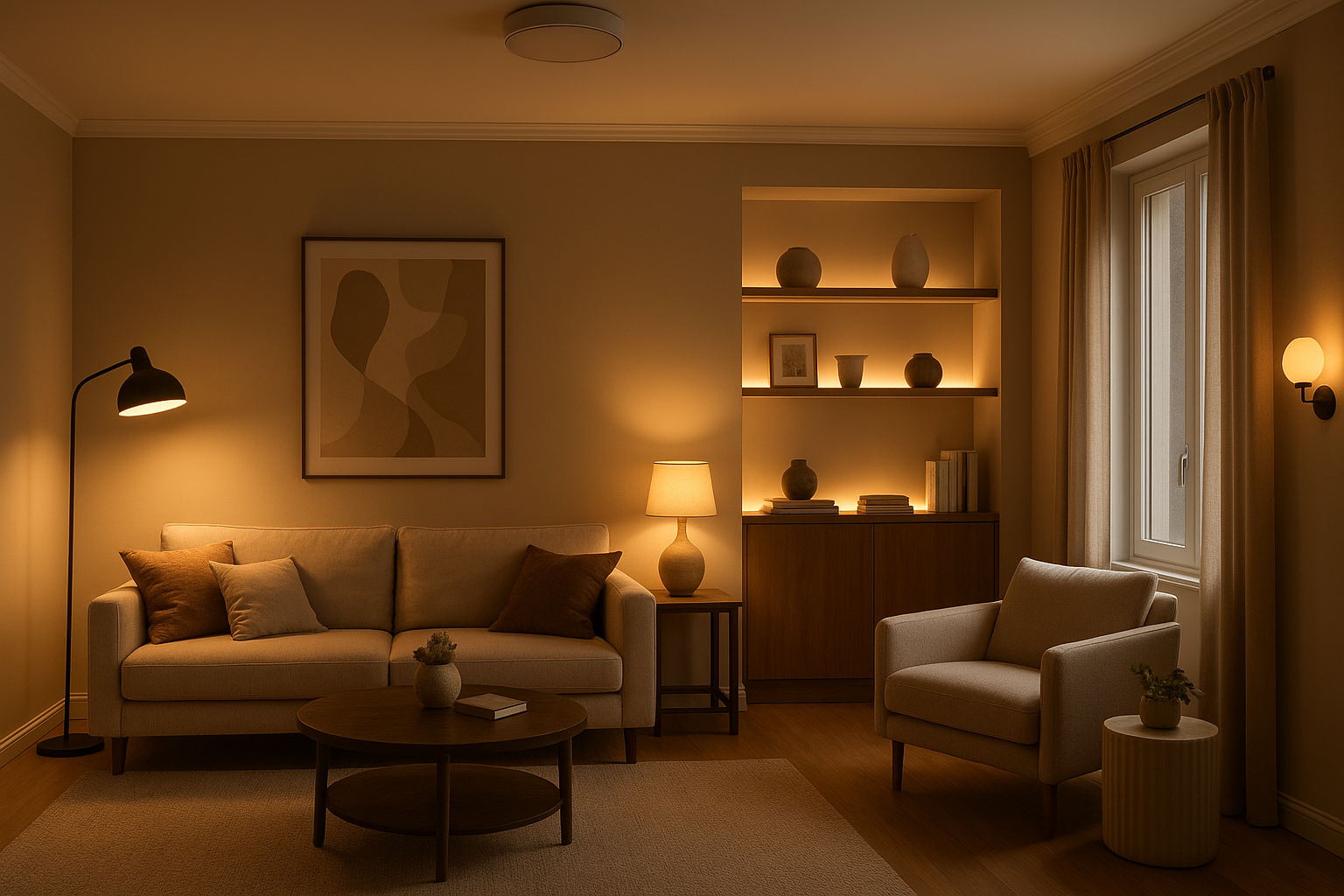Lighting is one of the most powerful tools in interior design. While many people focus primarily on furniture, wall colors, and accessories, lighting can completely transform the atmosphere of a room. It has the ability to make a space feel warmer, more spacious, and more inviting—or, if poorly executed, dull and uncomfortable. Understanding how to use lighting effectively can elevate your home’s design and create a space that truly feels like yours.
Why Lighting Matters in Home Decoration
Lighting affects not only the visual appeal of a room but also the mood of those who spend time there. A well-lit room feels open and inviting, while poor lighting can make even a beautiful room feel gloomy or cramped.
Good lighting can:
- Highlight the architectural features of your home
- Emphasize textures and colors in your decor
- Create a sense of depth and dimension
- Influence mood and energy levels
Types of Lighting and Their Functions
A complete lighting plan often includes three main types of lighting:
Ambient Lighting
Also known as general lighting, ambient lighting provides the overall illumination of a space. Examples include ceiling lights, chandeliers, and recessed fixtures. This type of lighting ensures you can move around safely and comfortably.
Task Lighting
Task lighting is focused and designed for specific activities like reading, cooking, or working at a desk. Desk lamps, under-cabinet kitchen lights, and bedside reading lights are all task lighting examples.
Accent Lighting
Accent lighting draws attention to specific features in a room, such as artwork, plants, or textured walls. Spotlights, wall sconces, and LED strips are often used for this purpose.
Choosing the Right Bulbs
Light bulbs can significantly affect the look and feel of your room. When choosing bulbs, consider:
- Color Temperature: Warm white (2700K–3000K) for cozy spaces, cool white (3500K–4100K) for kitchens and bathrooms, and daylight (5000K–6500K) for workspaces.
- Brightness: Measured in lumens; more lumens means more brightness.
- Energy Efficiency: LED bulbs are the most efficient and long-lasting option.
The Role of Natural Light
Natural light is one of the most desirable features in home design. It makes colors appear more vibrant, improves mood, and even helps save on electricity. To maximize natural light:
- Use light-colored curtains or blinds
- Place mirrors strategically to reflect sunlight
- Keep windows clean for maximum brightness
Lighting for Different Rooms
Living Room
Layered lighting works best in the living room. Combine ambient lighting with task lights for reading and accent lights for decor.
Kitchen
Kitchens need bright, functional lighting. Under-cabinet lights and pendant lights over islands are great options.
Bedroom
Opt for warm, soothing lighting. Use bedside lamps or wall-mounted sconces for reading.
Bathroom
Bright, shadow-free lighting is essential. Vanity lights on both sides of the mirror work better than a single overhead light.
Common Lighting Mistakes to Avoid
- Relying on a single light source for an entire room
- Using bulbs that are too bright or too dim
- Ignoring dimmer switches for adjustable brightness
- Overlooking the role of lamps and smaller fixtures
Final Thoughts on Lighting in Interior Decoration
Lighting is not just about making a room visible—it’s about creating an experience. By combining different types of lighting, choosing the right bulbs, and making the most of natural light, you can completely transform the look and feel of your home.
